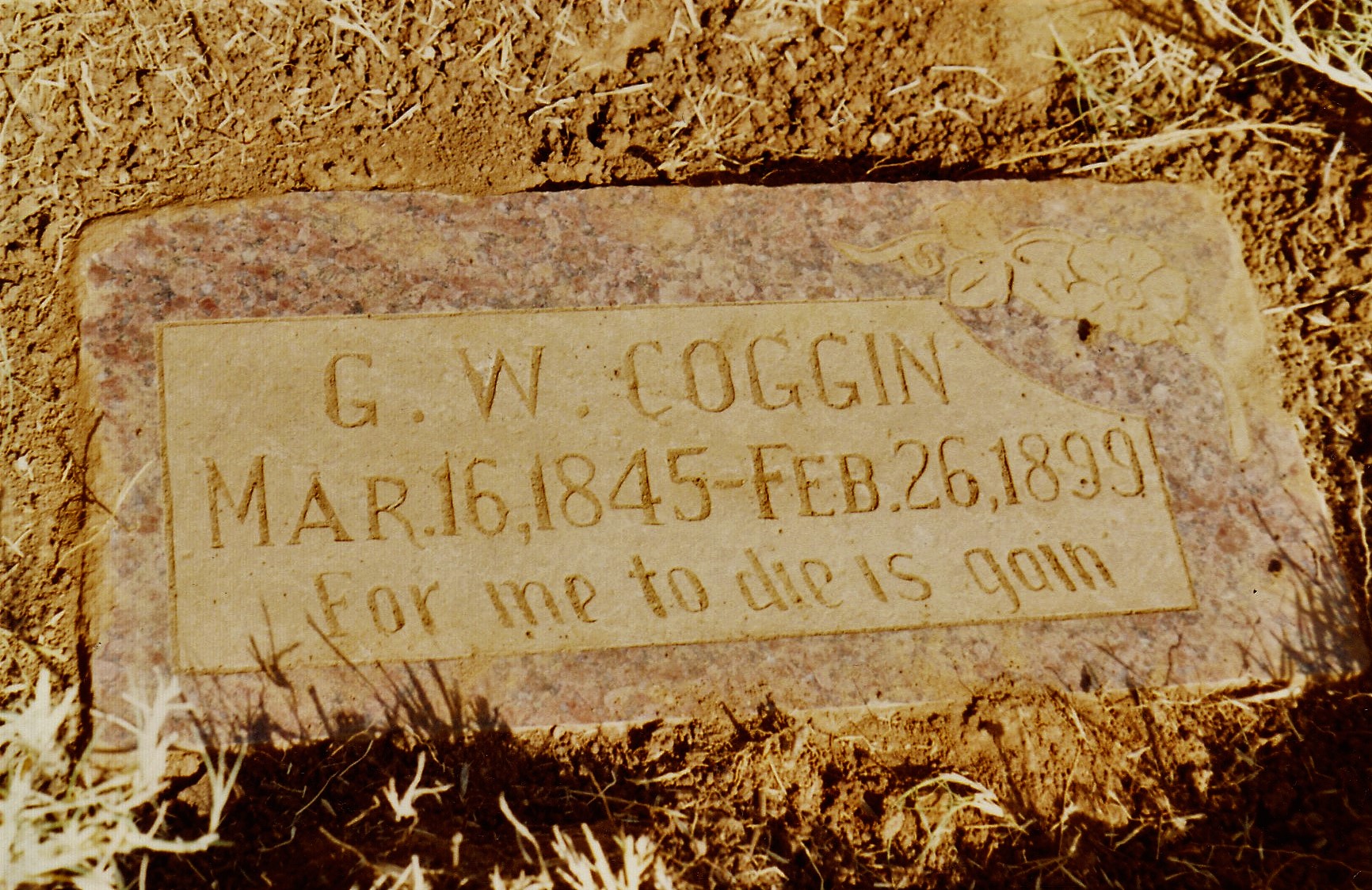Children: Nannie Bell, Mary "Madie", Charlie Eddy, Aletha Jane, Maggie Eva, Caroline "Carrie", Alymer "Gene".
The George W. Coggin family moved to Texas from Middle Tennessee about 1883. They apparently landed for a number of years in Limestone County, east of Waco. A family friend, named Charlie Boggs, came West with them in search of adventure. George and Charlie came first, by wagon, to establish a place to live. The family later came from Nashville to Mexia by train. It is assumed that George worked as farm labor during this time because there is no indication that they ever bought property. All of the girls married in this area, while the two boys married later in Abilene.
Oral family history says George had moved his family about 350 miles west to Taylor County, in the Fall of 1898. The story was that he had returned to their previous home to transport their personal possessions, including a steam saw, and to haul them by wagon to Taylor County. During the trip back out west, George spent the night in a barn in a wagon yard in Cleburne. He apparently contracted small pox from another man who was also staying there. He made it on back to the family. At some point, while loading or unloading the saw, his arm was severely cut, and became very infected. When George fell sick with small pox, the family tried to lay the blame on his ill-health on the infected cut. The local doctor, however, confirmed it as small pox. The city newspaper accounts indicate some considerable hysteria over discovery of the disease. The family recalled that they were completely ostracized by the town. The health people erected a tent in the back yard, and made them go through tubs of some type of anti-septic liquids, hot water, and lots of embarrassment. They burned all clothes and bed linens, pulled wall paper off the walls, rugs off the floors. They cleaned anywhere they could imagine the virus to habitate. George died during the night of February 26, 1899, and was buried before morning. The effects of that unfortunate series of circumstances lingered in the lives of Damaris and her children. (excerpt from a family history written by volunteer-submitter "Pete Seeker.")
Children: Nannie Bell, Mary "Madie", Charlie Eddy, Aletha Jane, Maggie Eva, Caroline "Carrie", Alymer "Gene".
The George W. Coggin family moved to Texas from Middle Tennessee about 1883. They apparently landed for a number of years in Limestone County, east of Waco. A family friend, named Charlie Boggs, came West with them in search of adventure. George and Charlie came first, by wagon, to establish a place to live. The family later came from Nashville to Mexia by train. It is assumed that George worked as farm labor during this time because there is no indication that they ever bought property. All of the girls married in this area, while the two boys married later in Abilene.
Oral family history says George had moved his family about 350 miles west to Taylor County, in the Fall of 1898. The story was that he had returned to their previous home to transport their personal possessions, including a steam saw, and to haul them by wagon to Taylor County. During the trip back out west, George spent the night in a barn in a wagon yard in Cleburne. He apparently contracted small pox from another man who was also staying there. He made it on back to the family. At some point, while loading or unloading the saw, his arm was severely cut, and became very infected. When George fell sick with small pox, the family tried to lay the blame on his ill-health on the infected cut. The local doctor, however, confirmed it as small pox. The city newspaper accounts indicate some considerable hysteria over discovery of the disease. The family recalled that they were completely ostracized by the town. The health people erected a tent in the back yard, and made them go through tubs of some type of anti-septic liquids, hot water, and lots of embarrassment. They burned all clothes and bed linens, pulled wall paper off the walls, rugs off the floors. They cleaned anywhere they could imagine the virus to habitate. George died during the night of February 26, 1899, and was buried before morning. The effects of that unfortunate series of circumstances lingered in the lives of Damaris and her children. (excerpt from a family history written by volunteer-submitter "Pete Seeker.")
Inscription
G.W. Coggin
Family Members
Advertisement
Records on Ancestry
Advertisement
























